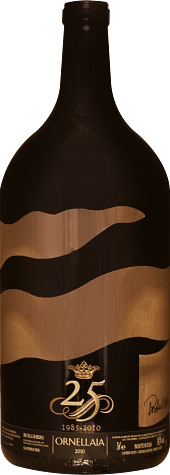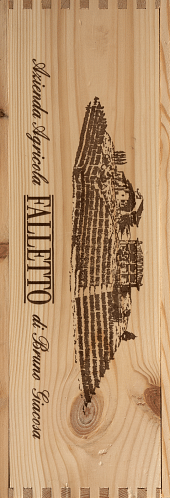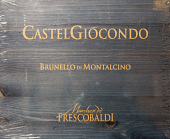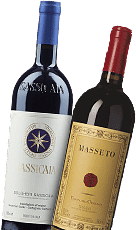
Gaja
The history of this dynasty was founded in 1859 when the great-great grandfather John founded the historical Gaja winery in Barbaresco since then this has been synonymous with quality. It was Angelo, the second generation of the family, to focus on quality production already in the early '900.
The Tili winery vineyards extend for more than 15 hectares over the hills near the picturesque city of Assisi in the luxuriantly green heart of Umbria. The love for this land and its fruits is the force driving this family business that, for decades, has passionately and wholeheartedly dedicated itself to the production of top quality wine and oil.
Here we are in Cerè di Negrar on Mount Cà Paletta in the Valpolicella region, lost in the charm of this place, with its olive groves, cherry trees and - obviously - vineyards.
Select Pairing
He was the first to understand that the export was the trump card for Italian wine: his products were started being offered on the U.S. market. Today he has a hundred hectares of vineyards in Piedmont, and more than two hundred in Tuscany, adding that the production Piedmont with the most famous Tuscan wines, Brunello di Montalcino in the head.
Oenologist Guido Rivella is the soul of all the wines from the Gaja family. When, in the mid-sixties, he joined the tour of great food, has an excellent array of wines. Then come the cru: the first, San Lorenzo in 1967. In 1970 Sorì Tildin and in 1978 it was the turn of Costa Russi. Today the brand means 92 hectares property carried out in full respect of nature, for a production of about 350,000 bottles a year.

Gaja Wine Awards
Precious bottles, which perfectly reflect the personality of Angelo, or rather his way of understanding the wine. He was the first to dare to innovate this wine with techniques that go after killing dizzying production per hectare (for better quality), to control fermentation temperature, the use of caps and long aging in oak barrels. There are many magazines that have talked about him as a true legend of the wine world, considering that his Barbaresco 1985 was defined by Wine Spectator "the best wine ever produced in Italy ", in 1998 the British Decanter elected him" Man of the Year "and, finally, in 2011 still American Wine Spectator honored even by their cover.
He was also awarded as Prize for Lifetime Achievement, the prestigious German magazine of reference dedicated to the business of international wine Meininger's Wine Business International, for a successful life as a man who made history, innovated, looked over and wagered bringing its wines and its name in the Olympus of world enology.


The origins of the Tili cellars
The founder of the Tili family arrived here in Central Italy way back in 1200, as one of Barbarossa’s followers. And his descendants have never left. In 1978, following tradition and the family business, the owner of the company started to bottle the wine. His sole aim was to realise the dream of making the wine recognised, tasted and appreciated worldwide. And this is still happening down to today.
The Tili winery, which produces between 90,000 and 100,000 bottles a year, is now known in the United States, Japan, Denmark, Belgium, Austria, Sweden, Switzerland and Germany. The Tili wines stand out as value products due to the calcareous terrain on which they are grown, a terroir that is particularly permeable and unable to hold rainwater. This enriches the organoleptic profile of the grapes with saline. The strength of this family’s vineyards derives from the excellent geographic and climatic conditions. This combined with special growing techniques and lack of pesticides and weed killers produces wines of the highest quality. Tili products include Assisi Bianco DOC, Assisi Grechetto DOC, Assisi Rosso DOC, Gaudium, Muffa Reale, Assisi Pinot Nero DOC, Sacreterre and Young Assisi Rosso DOC.

We are at the Giuseppe Quintarelli winery. Silvio Quintarelli founded the company at the turn of the 20th century. The first vineyards of this historic winery were located in Figàri in the municipality of Marano di Valpolicella. Even then its wines were popular overseas and indeed were exported to the United States in small oak casks and demijohns. In 1924, the company moved to the valley and its present location and it was here that Silvio and his family continued their business. The 1950s brought generational handover, with Giuseppe, the youngest son, now managing the winery. He is the heart and soul of Quintarelli wines.
Quintarelli wines: perfect for aging

He was the one who gave the winery its name, who wrote its history, ensuring the success of Amarone and making his wines famous in Italy and around the world. Giuseppe is the one who has developed the winery, leading it to grow and innovate. However, he has never lost sight of what has given it strength over the years, that is, the traditional method, allowing only a few bunches to fully ripen, respecting nature and its seasons, using exclusively natural materials for growing the vines, handling the grapes and the wine. The wines in the Quintarelli cellars have two characteristics in common: a natural disposition for ageing for at least 10 years in wooden barrels and in bottles, which improves the wine and its characteristics and a liveliness that continues after the bottle has been opened.




 Red
Red  White
White  Rosè
Rosè 
















































